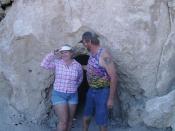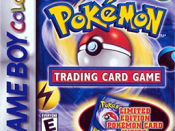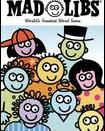Anno's Learning Games is a educational program for K-3, by Putnam New Media. It is available for both the Macintosh and MS-Windows platform. The activities are designed to strengthen student's logic and math skills in an enjoyable and entertaining way. The program is inspired by Mitsumasa Anno's book, Anno's Math Games. After booting the program, the user selects one of seven games by clicking on its icon. The interface is intuitive enough to learn in a matter of minutes and is very appropriate for the age group. If the user needs any help, there is on-line help available, and the language in the help is clearly and plainly worded.
The first game I tried was CARDS, a card game that helps teach logic and sequence. There is also a side program that allows you to customize the deck. This is a fun activity for kids, but the, real meat of the program is the card game.
GUESS MY RULE is a game where the student tries to classify a jumble of objects in a Venn diagram. The student needs to find commonalties between seemingly dissimilar objects and then guess what the rules of commonality are. The task is made easier with hints couched in the comments of the two hosts, Kriss and Kross.
GUESSING MACHINE is a interesting attempt at artificial intelligence. The user thinks of something and the computer asks yes or no questions about it. If you stump the computer, the student becomes the teacher and teaches the computer what the something was, and some parameters about it. The next time you play the game, the program will use this saved information and be 'smarter'. The game is a logic exercise for the student, but it makes the student feel useful in teaching the computer.
STORYMAKER is probably what kids will most enjoy, because of the use of animation and sound. The first task in the program is to make a set of characters. The user can cross a range of things, like a sneaker or owl, with a range of five characteristics, like jumping or colorful, for a variety of characters, like a jumping owl. Some of the sounds and animations that go along with the sometimes wacky characteristics are funny. After the cast of characters is finished, the computer puts them in a formulaic story, and reads it for the user. The end product is something like a 'Mad Libs' and is sure to provoke mirth in children and adults alike.
TANGRAMS is a computer version of the classic Chinese game of the same name. There is also an easier introductory version to the game called ANNOGRAMS that has fewer pieces. This ancient game is a time-tested method for teaching special skills.
WATERBALLONS doesn't really have much to do with math, though there is a little bit of on the fly estimation involved. It is a video game about catching more balloons than you drop.
The last game is WEIGHING, where the students can practice visual estimation skills. The users weigh items on Kriss's scale, and the reading comes not in numbers, but in lengths that appear beside each object on the screen. Kriss give the user a length, and they have to come up with an object or combination of objects that weigh that length.
I think Anno's Learning Games is a good program. The sound and animation is frequent and helps keep the student's attention. The games are set up so that learning comes along with the fun. The program could stand alone in teaching the kinds of logic skills it deals with, but if the kids could discuss strategies among themselves then comprehension might improve. I also think that Anno's books could be tied into the lesson plan. If some of the kids get really good at logic, then maybe they can try some more conventional logic problems.
??


